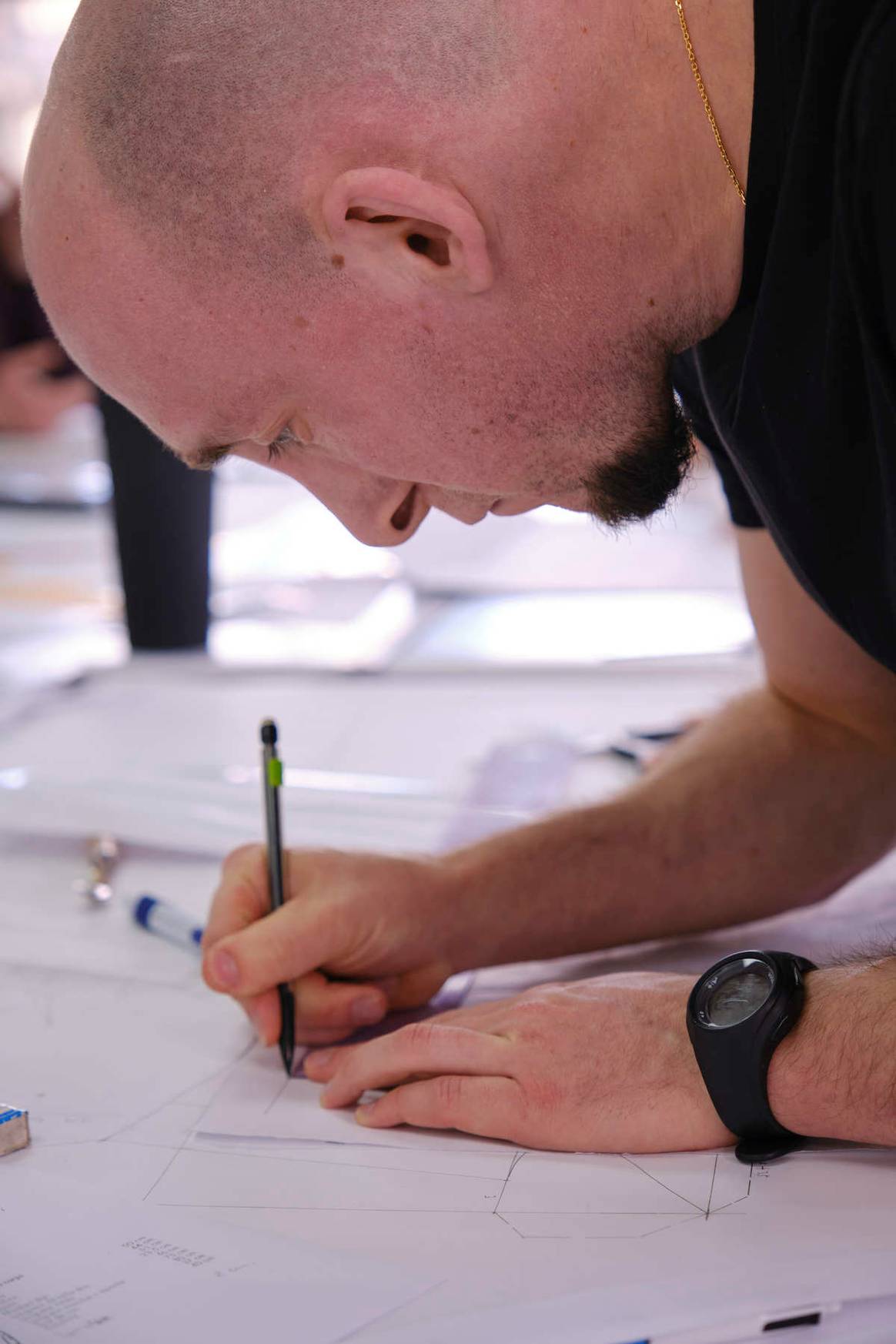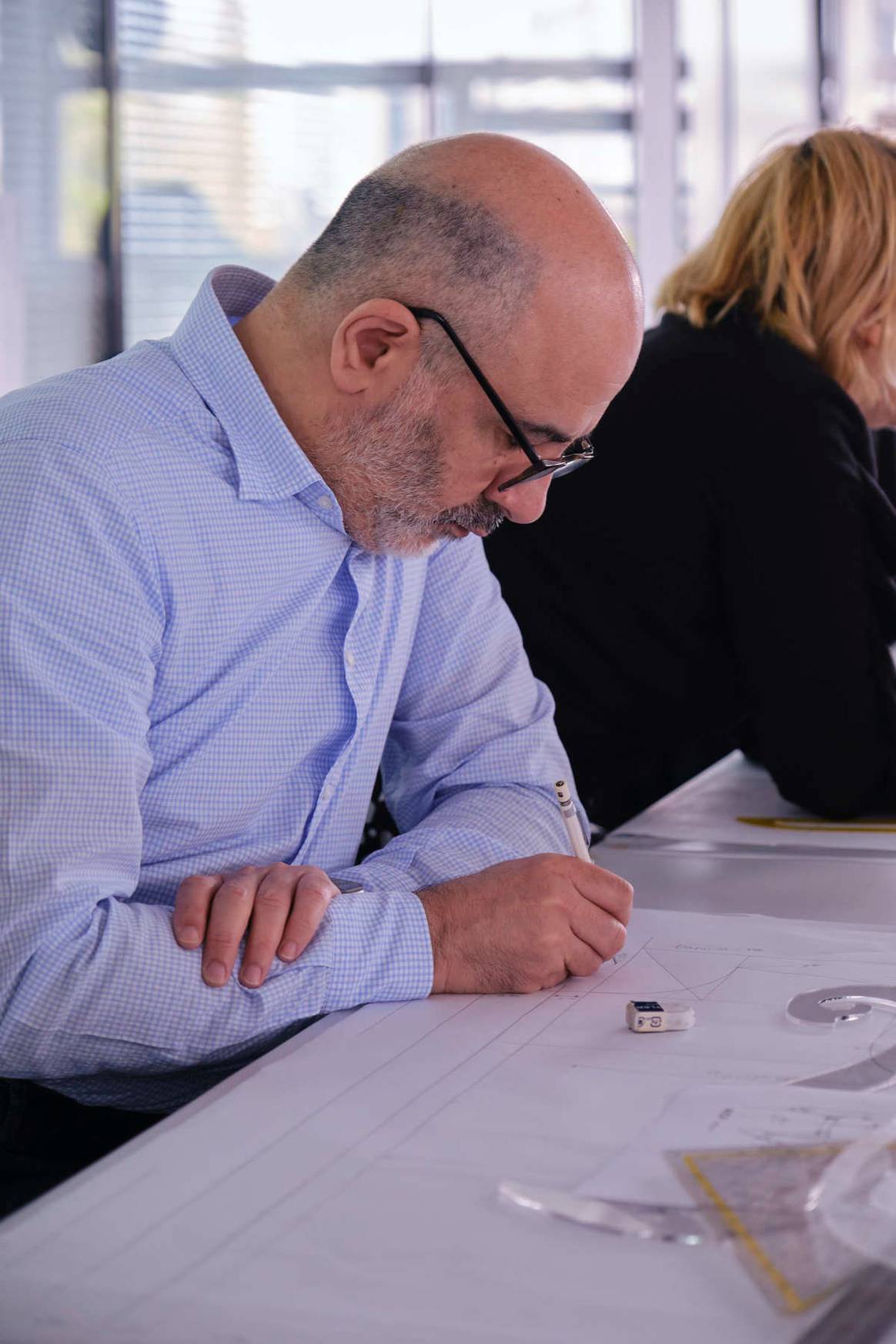Engaged in the clothing industry for 20 years.

Sharp threads, short supply: How a boom in menswear reveals severe market skills gaps
A wave of masculine refinement is surging through fashion, driven by discerning consumers who crave well-made clothes. Fueled by a renewed appreciation for quality and heritage, this isn’t just a fleeting fad – analysts predict the global menswear market will hit a staggering 642.95 billion dollars by 2028. But here’s the catch: this booming industry faces a critical skills gap. Who will be the tailors, craftsmen and pattern-makers shaping the future of menswear? Can the industry bridge this gap and sustain this growth? The stage is indeed set for growth, but the question remains: who will answer the call?
In an exclusive interview, Christine Walter-Bonini, president and a leading figure at the Paris International Cutting Academy (AICP), shares her thoughts on the boom in men’s ready-to-wear and the role the AICP intends to play in supporting players in this fast-changing sector.
The AICP: a family affair rooted in menswear
The AICP (or the Académie Internationale de Coupe de Paris, in French) has a rich history, deeply rooted in the art of menswear. Yet, it was the tailors themselves who were behind its creation in 1830. Since then, tailors have always led the school, including Monsieur Darroux (also a journalist from 1920), until its takeover by the tailoring family Vauclair, in 1968. The school’s strategic turnaround took place at this time, expanding its programmes to include industrialisation techniques, aligning itself with the flourishing ready-to-wear market.
A changing landscape
Walter-Bonini herself admits to a deep passion for menswear. In fact, she has observed a renewed interest in men’s fashion. A trend that she believes can be attributed to a confluence of factors.

“Two things happened at the same time: On the one hand, the covid period, which was complicated for all sectors, but also one when menswear suffered perhaps even more than the others, both in terms of manufacturing and distribution. And now, two or three years later, there is renewed interest in menswear. Why is this? First of all, we need to start with the consumer, and look at his needs: men, young men and teenagers are increasingly interested in menswear. They want beautiful things and are increasingly interested in their appearance. As a result, many brands that had previously stopped making menswear, or that only made women’s clothing, have [re]started to produce it,” explained the president.
Men are increasingly looking for quality, well-made garments that meet their tastes and reflect their individuality and style. They also share a growing appreciation of heritage and craftsmanship, with a new appetite for made-to-measure and half-measures. An evolution that menswear, rich in tradition, embodies to perfection.
A need for skills in the market
However, this renewed interest in menswear comes with its own set of challenges and obstacles. Whether the industry can overcome them remains to be seen. For there is one major obstacle standing in the way of its expansion: a critical lack of technical skills. The era of ‘fast fashion’ and its predecessor, industrialisation, focused on mass production and disposable garments, has led to a decline in qualified technical expertise. The result is a fashion industry facing a major skills shortage. A shortage that affects all the technical skills needed for design, particularly in pattern-making.
“Today, technical training programmes for men are dwindling,”
According to Walter-Bonini, several factors are, as is often, to blame. First of all, technical training programmes in model making are rare, she notes. As a result, more and more companies are struggling to find qualified candidates for vacant technical positions.
Next to this, another problem is raising the alarm: the wave of retirements among the ‘baby boomers’, the employees born in the 1950s who are now reaching retirement age. Their vast knowledge and expertise are leaving the industry with them. And it’s not being passed on. The younger generations have not acquired the skills needed to replace these departing professionals.

But every crisis brings its own opportunities. This confluence of factors has created a thriving job market for qualified patternmakers. Demand for manual skills is extremely high in the sewing sector, with around 10,000 vacancies this year alone. Historically, manual trades and technical skills have not enjoyed the same recognition as creative roles in fashion. But a positive shift is underway.
Reviving menswear: the desire for concrete careers for the new generation
New generations increasingly appreciate the combination of technical expertise and creative expression offered by these professions. Technical jobs in menswear involve working with high-quality materials and mastering complex techniques handed down from generation to generation. They combine knowledge, expertise, tradition, heritage and timelessness, and are the perfect embodiment of the notions of ‘sustainability’ and ‘meaning’. This quest for meaning is precisely what the active generations on the labour market are looking for.
In this respect, Walter-Bonini observes that the discussion around craft trades is growing: “We see this in the applications we receive at the AICP. Through interviews and written tests, we see a clear shift in aspirations among young applicants, particularly since the pandemic. The experience of confinement and the global crisis seems to have given rise to a desire for ‘meaningful and practical’ careers, as many candidates have expressed. They aspire to work creatively with their hands and create something physical.

“As a result, we have seen a growing interest not only in fashion design, but also specifically in technical areas such as pattern making and tailoring. This post-Covid shift towards craft is particularly interesting. It has led them to completely redefine their career paths. Over the past two years, this trend has continued to grow and shows no signs of slowing down, which is also the motivation behind the AICP relaunching men’s fashion training.”
From patternmaking to AI: How AICP is preparing its students for the changing menswear industry
AICP is, once again, at the forefront of this movement, training the next generation of skilled professionals to shape the future of fashion. Walter-Bonini continued: “We are reviving everything that no longer exists but is needed in business. The school is also adapting to new materials, which are much more technical. Students are learning digital technologies. All the tools ranging from digitisation to artificial intelligence (AI) are covered by the school, as well as knowledge of CSR and value chains, to ensure that students and trainees remain 100 percent aware of how their profession is evolving.”
The president added: “Follow-up and discussions with professionals are extremely important in this respect, and the school is also much sought after by companies to bring professionals up to date through continuing education.”
The AICP equips its students with the skills needed to excel in menswear, from basics such as pattern-making, moulding and garment construction, to meaningful experiences collaborating with industry professionals on real-world projects.
“Technological advances are another force shaping the menswear industry,” says Walter-Bonini. 3D printing has immense potential for creating bespoke garments that fit the wearer perfectly. AI has the potential to personalise clothing choices, adapting to individual styles and preferences. And the AICP is actively exploring the integration of these advances into its teaching methods.
The international appeal of the AICP: Training the next generation of professionals around the world
The academy follows trends beyond French haute couture. Its long-standing partnership with Japanese garment manufacturers, spanning more than 40 years, has earned it a solid reputation in Asia, particularly Japan. This partnership, initiated by Vauclair, has consolidated AICP’s expertise in menswear. The academy has also built up a solid network of universities and schools in Asia, particularly in Japan, Korea and China, making it easier each year to attract talented students seeking technical training.
When asked what motivates these students to enrol at the academy, the president explains: “Technical skills are highly valued in Asia, and students are eager to refine their expertise. While traditional Japanese pattern-making often focuses on flat patterns, the AICP offers a comprehensive approach that incorporates 3D techniques. This innovative method allows students to develop a strong skill set, preparing them for the future of fashion design.
“Beyond the technical aspects, there’s the intangible advantage of the prestigious reputation that Paris and its schools hold in Asia. Students value the opportunity to learn from renowned instructors and hone their skills in a city synonymous with fashion, luxury, and craftsmanship.”
A glimpse into the future
Looking ahead, Walter-Bonini envisions a future brimming with possibilities for the menswear industry. Sustainability is becoming an increasingly prominent concern, with a growing demand for eco-conscious practices throughout every stage of the garment life cycle.
However, the conversation doesn’t stop there. As technological advancements continue to reshape the world, the role of AI in fashion creation is a topic that persistently resurfaces. “Could AI ever truly replace the human touch?” ponders the president. “It’s a question on everyone’s minds. But one that remains, for now, without a definitive answer.”


